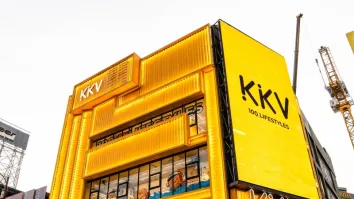Shrinkflation: Balancing margins and consumer satisfaction
RSM Partner David Eu said shrinkflation is working for retailers by reducing product sizes to maintain prices whilst managing consumer expectations.
Shrinkflation is not just a buzzword in retail these days, but a strategy that industry leaders believe enables businesses to maintain or increase their profit margins. Retail Asia sought out David Eu, a partner at RSM, to get some answers.
“Shrinkflation is a phenomenon in which manufacturing retailers reduce the size or quantity of a product whilst keeping the price the same or increasing it slightly. It is a way to maintain or increase profit margin by providing customers with less product for the same money,” Eu explained.
Whilst inflation refers to a general increase in prices over time as a result of inflationary pressures from various factors such as raw materials, production, transportation, and labour costs, Eu said shrinkflation is a strategy that drives towards managing costs and maintain profitability.
“Inflation takes advantage of a psychological phenomenon known as the size quantity bias. By reducing the size subtly, businesses may avoid negative consumer reactions compared to increasing prices,” he said, noting how consumer psychology plays a role in the success of shrinkflation.
However, Eu acknowledged that shrinkflation can be seen as lacking transparency, as consumers may not immediately notice the subtle size reduction.
If consumers perceive this strategy as deceptive or unfair, it may lead to dissatisfaction and potential loss of customer loyalty. In the long term, trust and loyalty can be eroded if customers consistently discover smaller or lower-sized products, potentially resulting in declining sales and negative sentiment.
Whilst shrinkflation offers short-term financial benefits by protecting profit margins, its long-term sustainability as a means of offsetting rising costs is questionable.
Retailers need to consider the potential consequences on customer trust and loyalty, as well as explore alternative strategies to adapt to changing economic conditions.
Still, the acceptance of shrinkflation can differ based on consumer awareness and economic factors, varying between developed and developing countries.
“Inflation prevalence and customer acceptance may vary across regions and industries. Developed countries like the US and Europe are more aware and critical of inflation, whilst developing countries may face less consumer resistance,” said Eu.
There are several alternatives to shrinkflation that retailers and F&B companies can employ to offset costs whilst still offering value to consumers.
Eu enumerated them as product reformulation, sustainable packaging solutions, premium variants, bundling value packages, operational efficiency, transparent communication of price increases, and innovation and diversification of product offerings.
Explaining one of these strategies, Eu said: “Switching to lightweight or recyclable packaging materials can help offset rising costs whilst appealing to environmentally conscious consumers.”
Product diversification and innovation is also important to maintain customer attraction and satisfaction amidst increasing costs.
”By introducing new and unique products that cater to changing consumer preferences or emerging trends, businesses can create value and attract customers, even in the face of rising costs,” he pointed out.
As the retail and F&B industries continue to evolve, businesses must adapt to changing economic conditions and consumer preferences whilst ensuring transparency and delivering value to their customers.
For now, shrinkflation has become a prominent strategy for retailers seeking to balance margins and consumer satisfaction.

















 Advertise
Advertise





